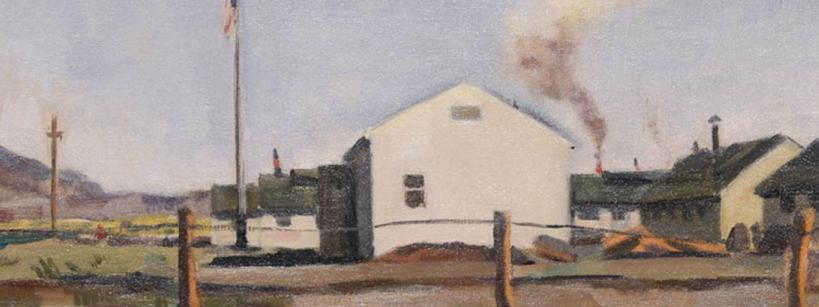Whole Class Lesson
During this Japanese American Incarceration lesson, students will learn about the forced removal and incarceration of the Japanese American community during World War II by analyzing multiple sources (e.g., artwork, map, object label, oral histories, photographs, poster, report, and video). They will also learn about how the Japanese American community resisted being forcibly removed and incarcerated and what life was like for the Japanese American community after incarceration. Students will then have the opportunity to plan and create their own sources, write about them, and share their work with others.
Standards
CA HSS: 10.8.6
CA HSS: 11.7.1; 11.7.5
CA VA: Re7; Re8
CA VA: Cn11
Lesson and Resources
Lesson: Japanese American Incarceration - English
Lesson: Japanese American Incarceration - Spanish
Student Response Sheet: Japanese American Incarceration - English
Student Response Sheet: Japanese American Incarceration - Spanish
Supporting Resource: Interactive Media Exploration - Japanese American Incarceration Interactive Map Graphics
Teaching Tips for Different Learning Environments
Whole Class In-Person Learning:
Activate - Activate students’ prior knowledge by asking them to share what they know about sources.
Investigate - Have students investigate by analyzing multiple sources.
- Read the INTRODUCTION and complete the source activity with the whole class.
- Read PART 1 and discuss the answers to the questions with the whole class.
- Divide the students into groups. Ask the students to complete PART 2 with their groups before discussing the answers to the questions with the whole class. Then ask the groups to engage in an online source analysis by exploring another map online to learn more about Japanese American incarceration. Instructions as follows: Groups type key words such as “Japanese American incarceration map” into a search engine, pick a map to analyze, and analyze it. Groups share with the whole class what they learned about their map by describing what it is, who made it, where it was made, when it was made, why it was made, and how it is similar to and/or different from the map in the Japanese American Incarceration lesson.
- Ask the students to complete PART 3 with their groups before discussing the answers to the questions with the whole class. Then ask the groups to engage in another online source analysis by exploring a different poster online to learn more about Japanese American incarceration. Give the groups the same online source analysis instructions previously used with the map, but replace the word “map” with “poster.”
- Ask the students to complete PARTS 4-8 with their groups before discussing the answers to the questions with the whole class. Then ask the groups to engage in additional online source analyses for PARTS 4-8 by exploring other sources online that are the focus of each part using the same online source analysis instructions previously used.
- Ask the students to complete PART 9 independently. Then have a whole class discussion about their answers to the question: What can multiple sources teach us about the past?
Create - Have students create their own sources by completing PART 10 independently.
Demonstrate - Have students demonstrate their learning by sharing their sources and written descriptions with others during a classroom exhibition or gallery walk.
Extension Activity - Have students complete the Extension Activity.
Whole Class Distance Learning:
- Follow the Whole Class In-Person Learning instructions.
- Instead of having a classroom exhibition or gallery walk, students can post their sources and written descriptions for others to view through Padlet or Flipgrid.
Associated Education Resources




